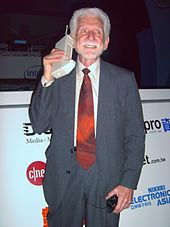Mobile phones, particularly the smartphones that have become our inseparable companions today, are relatively new.
History
A handheld mobile radio telephone service was envisioned in the early stages of radio engineering. In 1917, Finnish inventor Eric Tigerstedt filed a patent for a “pocket-size folding telephone with a very thin carbon microphone”. Early predecessors of cellular phones included analog radio communications from ships and trains. The race to create truly portable telephone devices began after World War II, with developments taking place in many countries. The advances in mobile telephony have been traced in successive “generations”, starting with the early zeroth-generation (0G) services, such as Bell System’s Mobile Telephone Service and its successor, the Improved Mobile Telephone Service. These 0G systems were not cellular, supported few simultaneous calls, and were very expensive. The very first mobile phones were not really mobile phones at all. They were two-way radios that allowed people like taxi drivers and the emergency services to communicate.

Instead of relying on base stations with separate cells (and the signal being passed from one cell to another), the first mobile phone networks involved one very powerful base station covering a much wider area.

The first handheld cellular mobile phone was demonstrated by John F. Mitchell and Martin Cooper of Motorola in 1973, using a handset weighing 2 kilograms (4.4 lb). The first commercial automated cellular network (1G) analog was launched in Japan by Nippon Telegraph and Telephone in 1979. This was followed in 1981 by the simultaneous launch of the Nordic Mobile Telephone (NMT) system in Denmark, Finland, Norway, and Sweden. Several other countries then followed in the early to mid-1980s. These first-generation (1G) systems could support far more simultaneous calls but still used analog cellular technology. In 1983, the DynaTAC 8000x was the first commercially available handheld mobile phone.
In 1991, the second-generation (2G) digital cellular technology was launched in Finland by Radiolinja on the GSM standard. This sparked competition in the sector as the new operators challenged the incumbent 1G network operators.
Ten years later, in 2001, the third generation (3G) was launched in Japan by NTT DoCoMo on the WCDMA standard.[9] This was followed by 3.5G, 3G+ or turbo 3G enhancements based on the high-speed packet access (HSPA) family, allowing UMTS networks to have higher data transfer speeds and capacity.
By 2009, it had become clear that, at some point, 3G networks would be overwhelmed by the growth of bandwidth-intensive applications, such as streaming media.[10] Consequently, the industry began looking to data-optimized fourth-generation technologies, with the promise of speed improvements up to ten-fold over existing 3G technologies. The first two commercially available technologies billed as 4G were the WiMAX standard, offered in North America by Sprint, and the LTE standard, first offered in Scandinavia by TeliaSonera.
5G is a technology and term used in research papers and projects to denote the next major phase in mobile telecommunication standards beyond the 4G/IMT-Advanced standards. The term 5G is not officially used in any specification or official document yet made public by telecommunication companies or standardization bodies such as 3GPP, WiMAX Forum or ITU-R. New standards beyond 4G are currently being developed by standardization bodies, but they are at this time seen as under the 4G umbrella, not for a new mobile generation.
Types of mobile phone
There are many types of mobile phones like smart phone and feature phone etc.
Smartphone
Smartphones have several distinguishing features. The International Telecommunication Union measures those with Internet connection, which it calls Active Mobile-Broadband subscriptions (which includes tablets, etc.). In the developed world, smartphones have now overtaken the usage of earlier mobile systems. However, in the developing world, they account for around 50% of mobile telephony.

Feature phone
Feature phone is a term typically used as a word to describe mobile phones which are limited in capabilities in contrast to a modern smartphone. Feature phones typically provide voice calling and text messaging functionality, in addition to basic multimedia and Internet capabilities, and other services offered by the user’s wireless service provider.

A feature phone has additional functions over and above a basic mobile phone which is only capable of voice calling and text messaging. Feature phones and basic mobile phones tend to use a proprietary, custom-designed software and user interface. By contrast, smartphones generally use a mobile operating system that often shares common traits across devices.
